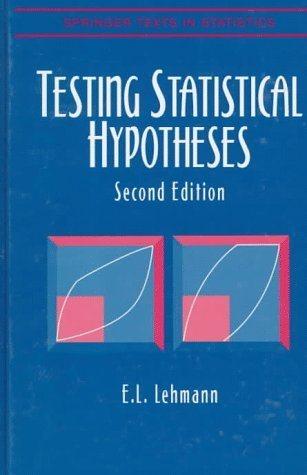1. The following distributions arise on the basis of assumptions similar to those leading to (1)-(3). (i)...
Question:
1. The following distributions arise on the basis of assumptions similar to those leading to (1)-(3). (i) Independent trials with constant probability p of success are carried out until a preassigned number m of successes has been obtained. If the number of trials required is X + m, then X has the negative binomial distribution Nbi p , m): P{ X = x } = ( m +: - 1)r"(1 - p)' , (ii) In a sequence of random events, the number of events occurring in any time interval of length l' has the Poisson distribution peAT), and the numbers of events in nonoverlapping time intervals are independent. Then the "waiting time" T, which elapses from the starting point, say t = 0, until the first event occurs, has the exponential probability density p(t)='Ae- Xt , t~O Let ~, i 2, be the time elapsing from the occurrence of the (i - 1)st event to that of the ith event. Then it is also true, although more difficult to prove, that T\ , T2 , . . . are identically and independently distributed. A proof is given, for example, in Karlin and Taylor (1975). (iii) A point X is selected "at random" in the interval
(a, b), that is, the probability of X falling in any subinterval of
(a,
b) depends only on the length of the subinterval, not on its position. Then X has the uniform distribution U(
a, b) with probability density p(x) = 1/(b - a), a < x <
b. [(ii): If t > 0, then T> t if and only if no event occurs in the time interval (0, t) .]
Step by Step Answer:







